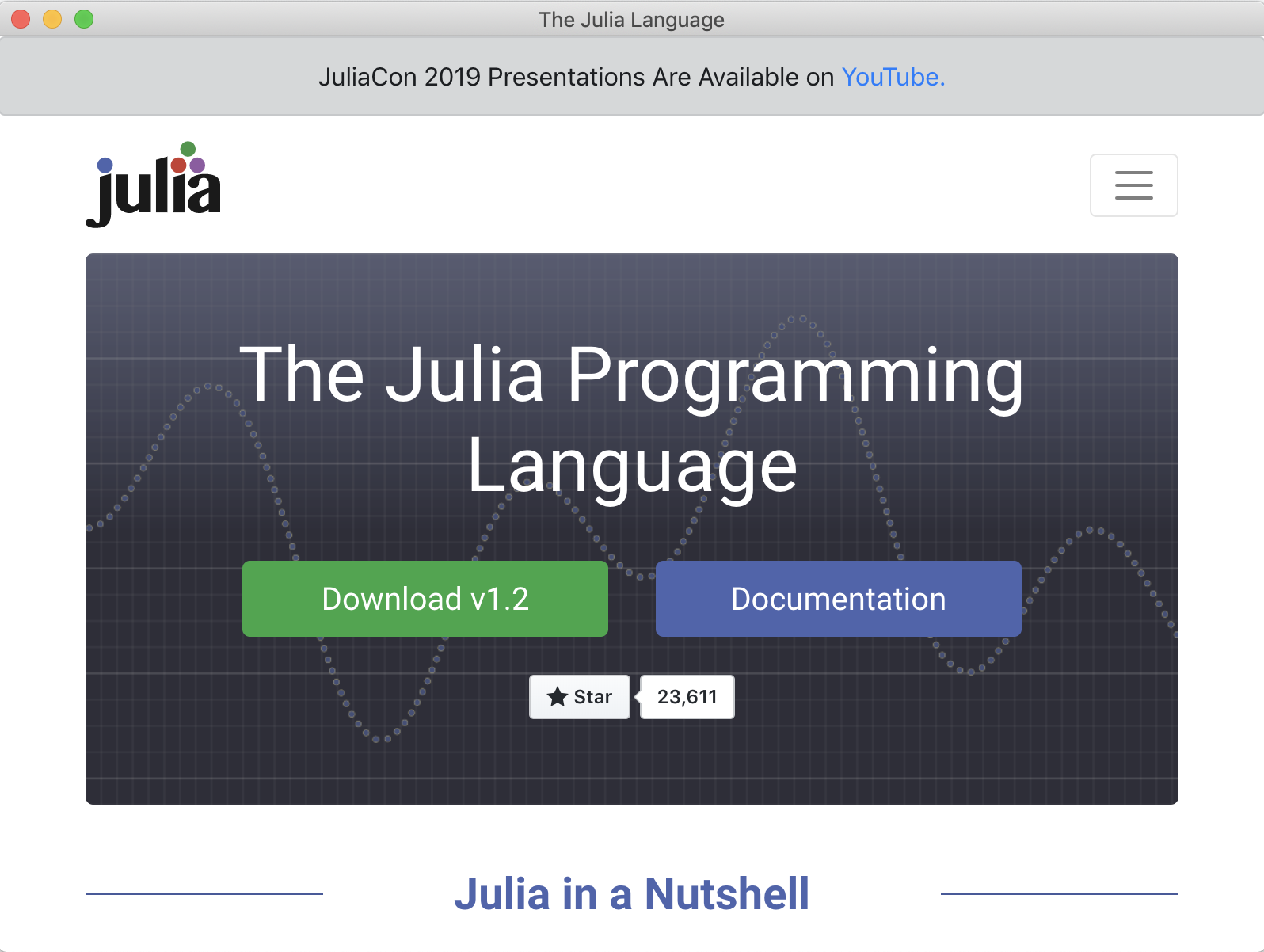Blink.jl is the Julia wrapper around Electron. It can serve HTML content in a local window, and allows for communication between Julia and the web page. In this way, therefore, Blink can be used as a GUI toolkit for building HTML-based applications for the desktop.
To install, do:
julia> Pkg.add("Blink")
# ... Blink builds and downloads Electron ...
julia> using Blink
julia> Blink.AtomShell.install()- 7z on Windows and
unzipon Linux.- You'll need to install the appropriate one for your system to be able to install Electron (for Linux,
apt get install -y unzipor similar should work). 7zis also packaged with Julia, so if you have your Julia installation in your PATH, we can use that version of7zas well.
- You'll need to install the appropriate one for your system to be able to install Electron (for Linux,
julia> using Blink
julia> w = Window() # Open a new window
Blink.AtomShell.Window(...)
julia> body!(w, "Hello World") # Set the body content
julia> loadurl(w, "http://julialang.org") # Load a web pageFor options see the functions defined in window.jl, which closely follow electron's API.
You can also use the JS API to interact with the window. For example:
julia> @js w Math.log(10)
2.302585092994046If that's not convincing enough, open the console (Cmd-Alt-I on OS X) and evaluate:
@js w console.log("hello, web-scale world")-
On Windows, the spawned process dumps its output into Julia's STDOUT, which is kind of annoying.
-
When running on a headless linux instance (such as for CI tests), you must start julia via
xvfb-run julia. More information can be found in the electron docs here. See the Blink.jl .travis.yml file for an example.Otherwise you will see the following error:
│ LoadError: IOError: connect: connection refused (ECONNREFUSED)


